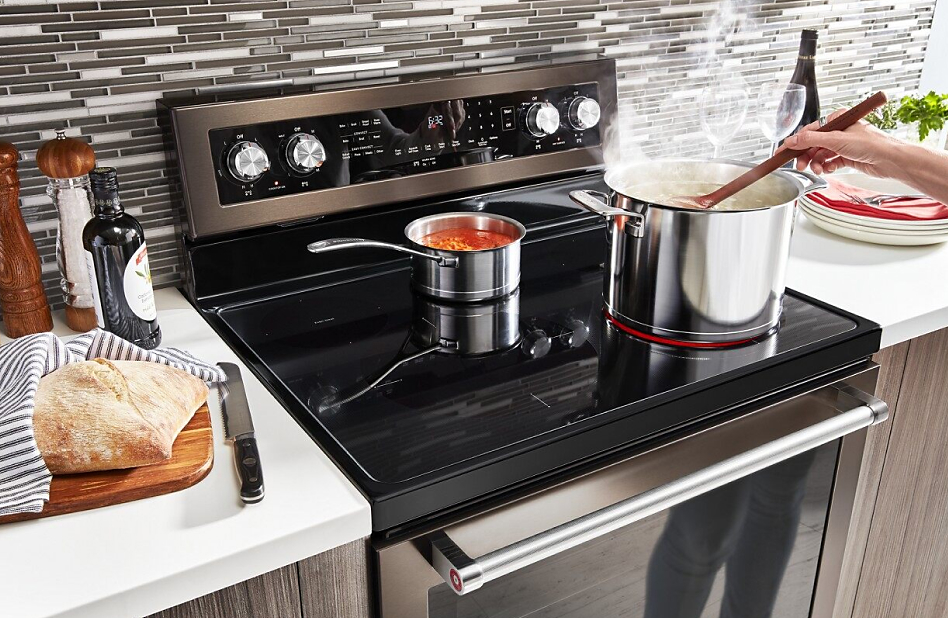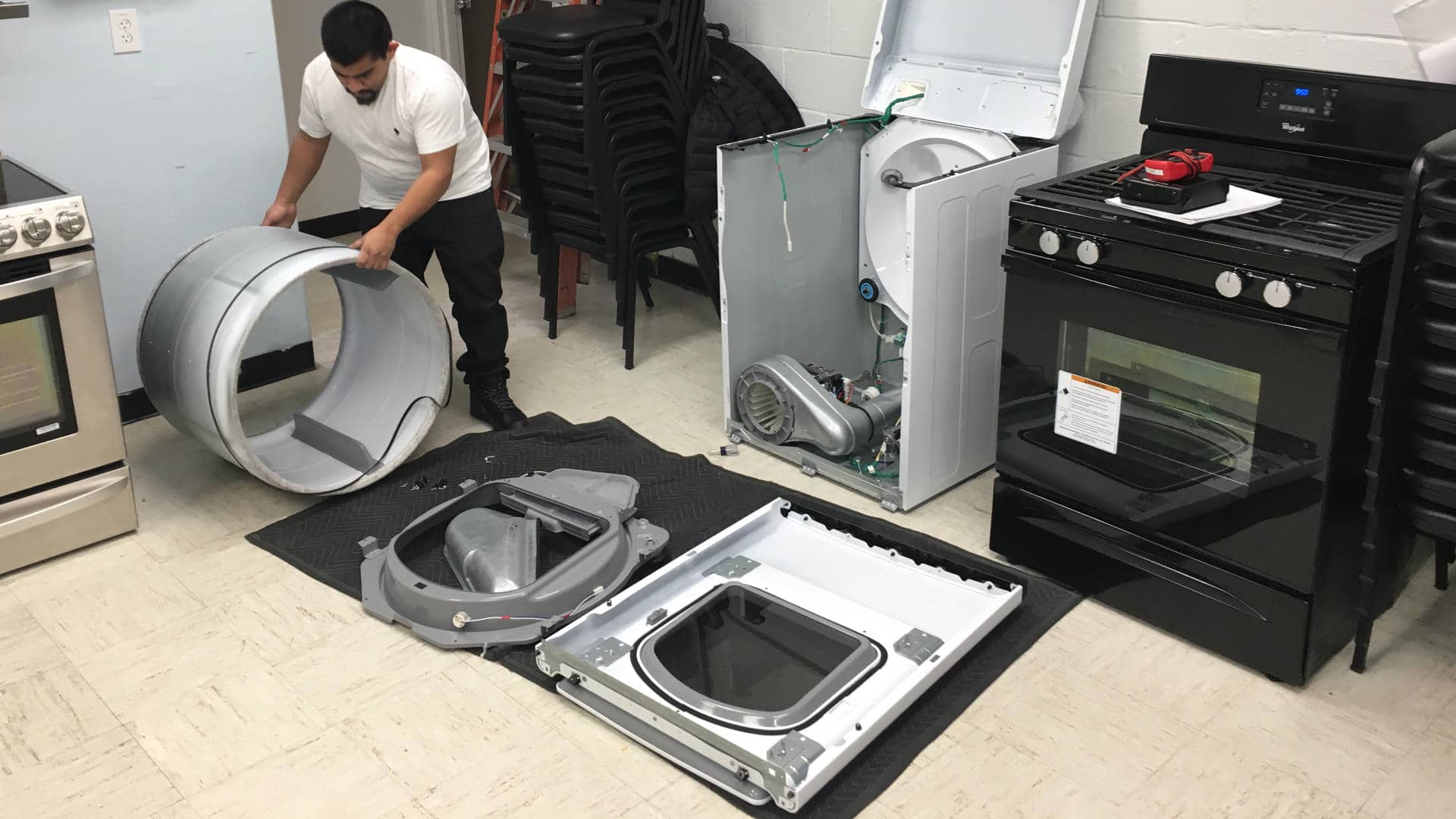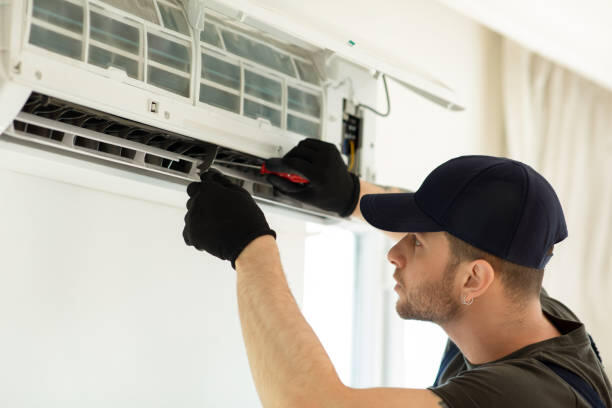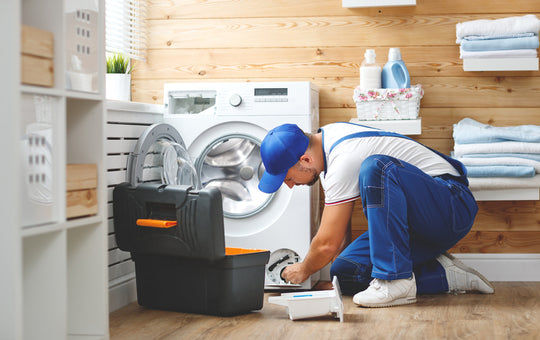Spring Cleaning: Tips for Your Home Appliances
Regular preventive maintenance is essential for keeping your home appliances running efficiently and extending their lifespan. Simple tasks like cleaning, inspecting, and timely replacements can prevent costly breakdowns and ensure your appliances operate smoothly. This guide offers key maintenance tips to help you care for your refrigerator, oven, washer, and more.
Spring Cleaning: Tips for Your Home Appliances
Spring is the perfect time to give your home appliances a thorough deep cleaning to ensure they’re running efficiently throughout the year. Here are some essential spring maintenance tips for your appliances.
- Refrigerator
- Oven
- Dishwasher
- Washing Machine
Refrigerator. Start by emptying the fridge and discarding expired items. Wipe down the shelves and drawers with a mixture of warm water and mild detergent. Don’t forget to clean the condenser coils at the back of the refrigerator, as dust buildup can reduce efficiency.
Oven. Remove and clean the oven racks using warm, soapy water. For the oven interior, apply a baking soda paste to remove stubborn grease and stains. Finish by wiping down the door and control knobs.
Dishwasher. Run an empty cycle with a cup of white vinegar placed on the top rack to remove odors and mineral deposits. Clean the filter at the bottom to ensure proper drainage and prevent clogs.
Washing Machine. Run a hot water cycle with a cup of bleach or vinegar to disinfect and remove residue. Wipe down the rubber seal and detergent drawer to prevent mold buildup.
By following these spring cleaning tips for your appliances, you’ll keep them running smoothly and extend their lifespan.
Deep Cleaning Techniques
Spring cleaning is the perfect opportunity to not only deep clean your appliances but also to inspect them for any signs of damage or wear. Identifying issues early can prevent costly repairs and ensure your appliances run efficiently.
- Refrigerator
- Oven
- Dishwasher
- Washing Machine
Refrigerator. While cleaning your refrigerator, check the door seals for cracks or gaps. A damaged seal can cause cold air to escape, leading to higher energy bills. Inspect the condenser coils at the back for dust buildup and ensure they’re not bent or damaged, as this can affect cooling performance.
Oven. As you clean your oven, examine the heating elements for any signs of wear, such as discoloration or cracks. Check the door seal for any damage that could cause heat to escape, reducing the oven’s efficiency. Also, ensure that the oven’s control knobs and buttons are functioning properly.
Dishwasher. During your deep cleaning, inspect the dishwasher’s spray arms to ensure they’re not clogged or cracked. Check the door gasket for wear, as a damaged gasket can lead to leaks. Additionally, examine the racks for rust or corrosion, which can transfer to your dishes.
Washing Machine. While cleaning your washing machine, inspect the hoses for cracks, bulges, or leaks, as these can cause water damage if left unchecked. Check the drum for any sharp edges or damage that could snag clothes. Also, ensure that the rubber door seal is intact and free of mold or mildew.
By incorporating these inspections into your spring maintenance routine, you can catch potential problems early, prolong the life of your appliances, and maintain their efficiency throughout the year.
Checking for Damage and Wear
Spring cleaning is the perfect opportunity to not only deep clean your appliances but also to inspect them for any signs of damage or wear. Identifying issues early can prevent costly repairs and ensure your appliances run efficiently.
- Refrigerator
- Oven
- Dishwasher
- Washing Machine
Refrigerator. While cleaning your refrigerator, check the door seals for cracks or gaps. A damaged seal can cause cold air to escape, leading to higher energy bills. Inspect the condenser coils at the back for dust buildup and ensure they’re not bent or damaged, as this can affect cooling performance.
Oven. As you clean your oven, examine the heating elements for any signs of wear, such as discoloration or cracks. Check the door seal for any damage that could cause heat to escape, reducing the oven’s efficiency. Also, ensure that the oven’s control knobs and buttons are functioning properly.
Dishwasher. During your deep cleaning, inspect the dishwasher’s spray arms to ensure they’re not clogged or cracked. Check the door gasket for wear, as a damaged gasket can lead to leaks. Additionally, examine the racks for rust or corrosion, which can transfer to your dishes.
Washing Machine. While cleaning your washing machine, inspect the hoses for cracks, bulges, or leaks, as these can cause water damage if left unchecked. Check the drum for any sharp edges or damage that could snag clothes. Also, ensure that the rubber door seal is intact and free of mold or mildew.
By incorporating these inspections into your spring maintenance routine, you can catch potential problems early, prolong the life of your appliances, and maintain their efficiency throughout the year.
Refrigerators, Ovens, Washers
Focusing on refrigerators, ovens, and washers will help ensure they operate efficiently and last longer.
- Refrigerators
- Ovens
- Washers
Refrigerators. Start by emptying your refrigerator and removing all shelves and drawers. Soak these in warm, soapy water while you wipe down the interior with a mixture of baking soda and water. Pay attention to door seals, cleaning them thoroughly to prevent air leaks. Don’t forget to vacuum the condenser coils at the back or underneath the unit to remove dust and improve energy efficiency.
Ovens. Begin by removing oven racks and soaking them in warm, soapy water. Apply a baking soda paste to the interior surfaces of the oven, focusing on areas with baked-on grime. Let it sit for a few hours, then wipe it clean with a damp cloth. For any remaining stubborn spots, use white vinegar to break down the residue. Also, clean the oven door and inspect the seals for any wear or damage that might affect efficiency.
Washers. For your washing machine, run an empty hot water cycle with a cup of white vinegar to disinfect and remove detergent buildup. Wipe down the drum, rubber seals, and detergent dispenser to prevent mold and mildew growth. While cleaning, inspect the hoses for signs of wear or leaks, and replace them if necessary to avoid water damage.
By following these spring maintenance tips, you can keep your refrigerator, oven, and washer in top condition, ensuring they run smoothly and efficiently throughout the year.
Preventive Maintenance Tips
Regular preventive maintenance is key to extending the life of your home appliances and ensuring they operate efficiently. By incorporating a few simple tasks into your routine, you can prevent breakdowns and costly repairs.
- Clean and Inspect Refrigerator Coils
- Check and Clean Oven Components
- Maintain Washer Hoses
- Clean Dryer Lint Trap and Vent
Clean and Inspect Refrigerator Coils. Dust and dirt can accumulate on the condenser coils of your refrigerator, causing it to work harder and use more energy. To prevent this, unplug the refrigerator and vacuum the coils at least twice a year. This simple step can improve efficiency and reduce wear on the compressor.
Check and Clean Oven Components. Regularly inspect your oven’s heating elements for signs of wear or damage. Cleaning the oven’s interior with a baking soda and water paste every few months helps remove grease buildup that can affect performance. Also, check the door seals to ensure they’re intact, as damaged seals can lead to heat loss and uneven cooking.
Maintain Washer Hoses. Washing machine hoses are prone to wear and tear, which can lead to leaks and water damage. Inspect the hoses every few months for cracks, bulges, or other signs of deterioration. Replace them every five years or sooner if you notice any issues. Running a hot water cycle with vinegar every few months helps prevent mold and mildew buildup.
Clean Dryer Lint Trap and Vent. To prevent overheating and fire hazards, clean the lint trap after every use and the dryer vent at least once a year. This not only improves drying efficiency but also reduces the risk of a lint-related fire.
By following these preventive maintenance tips, you can keep your appliances in top condition, reduce energy costs, and avoid unexpected breakdowns, ensuring they serve you well for years to come.





